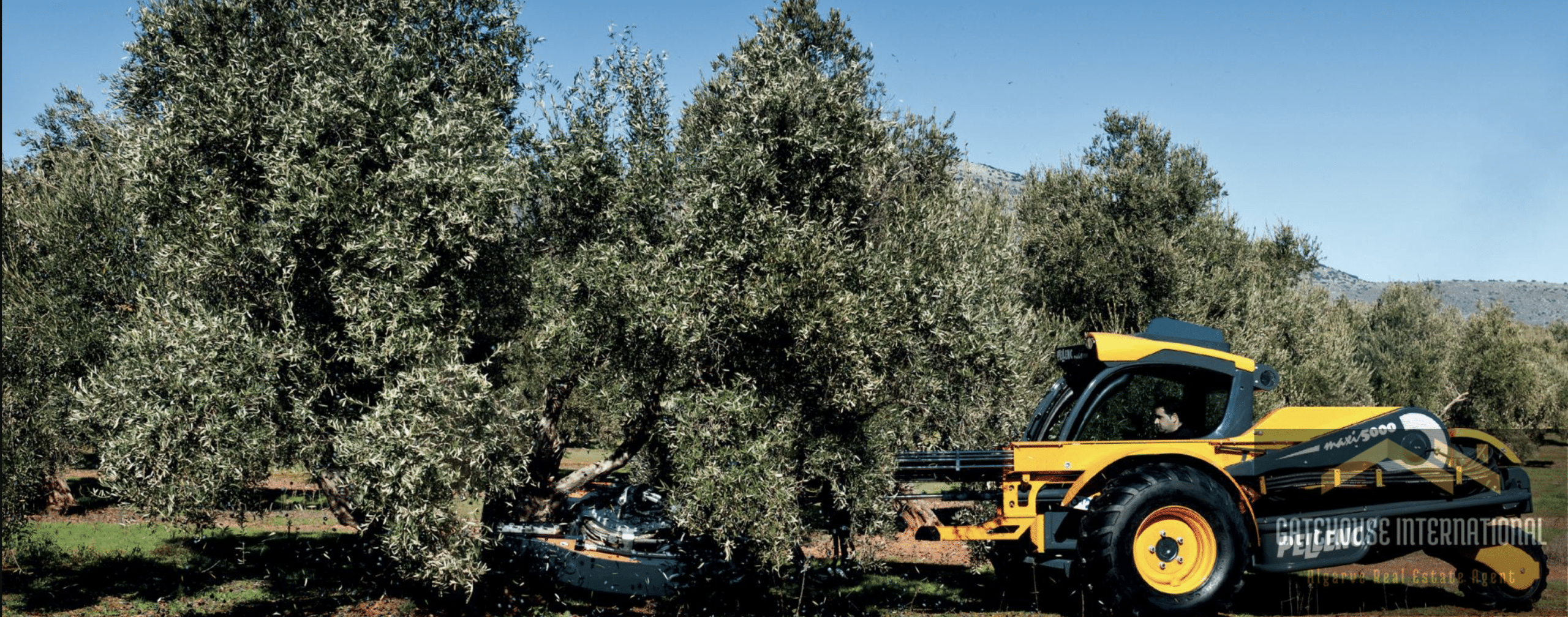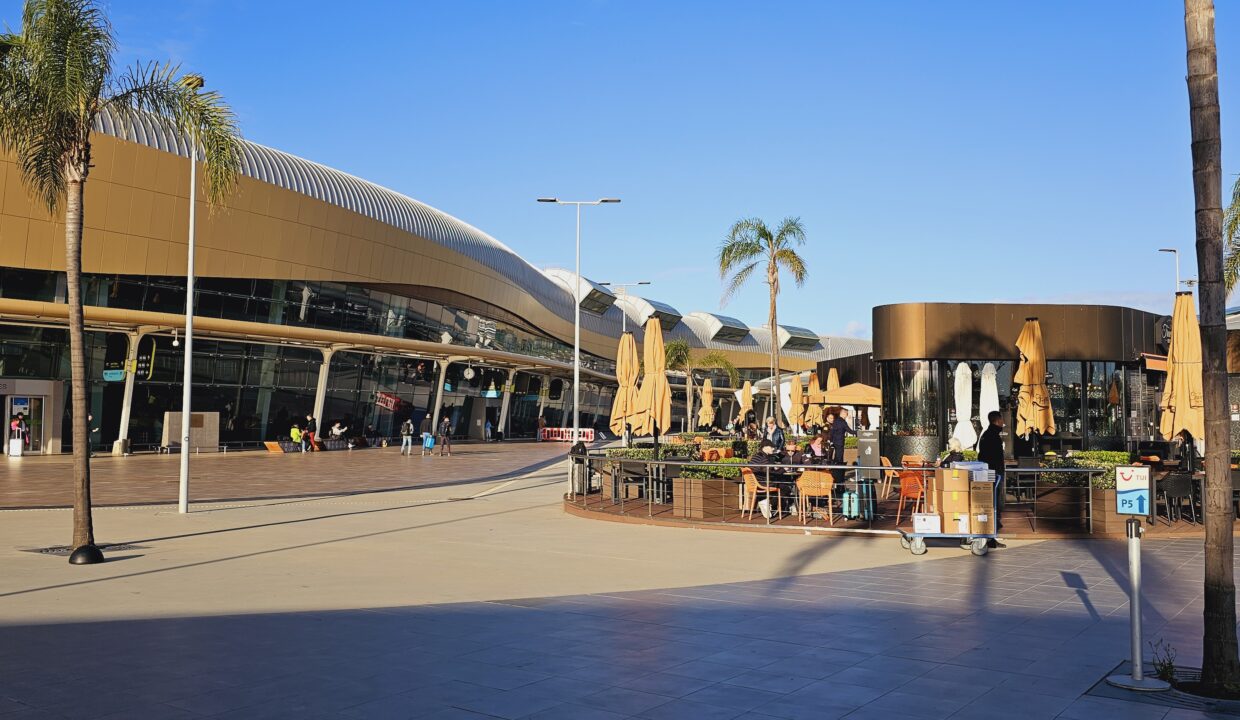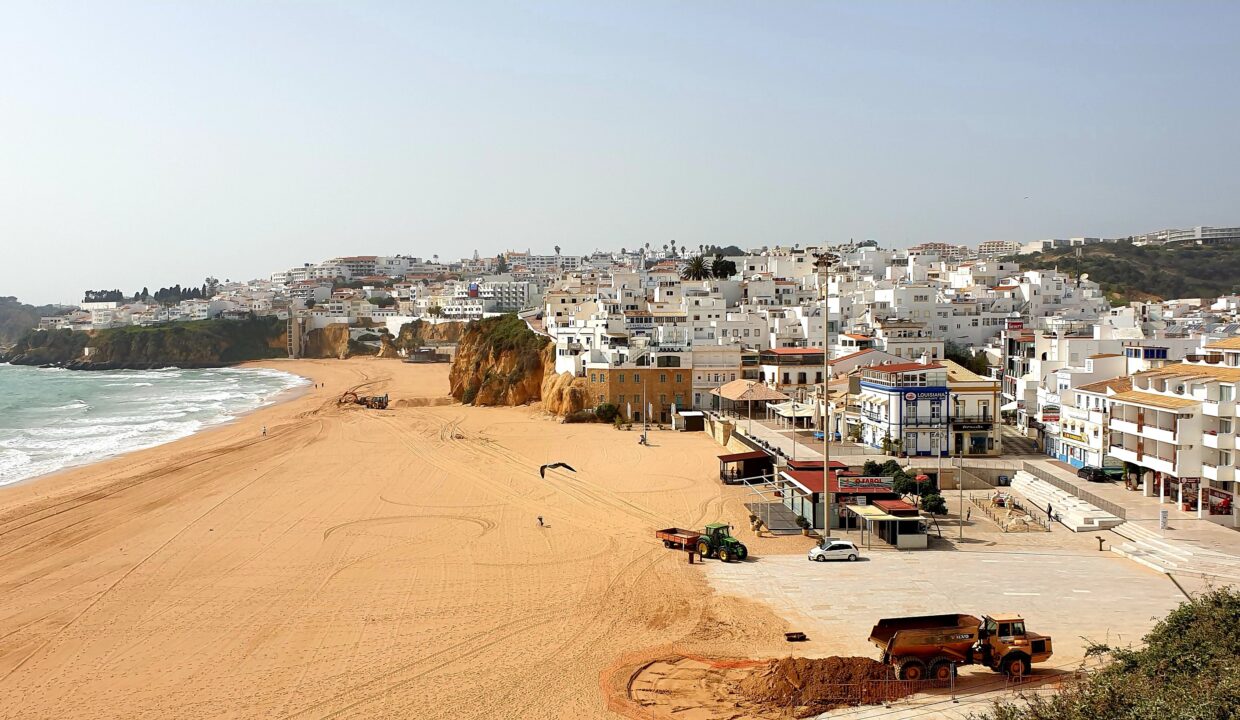How to Profit From Your Algarve Land with Olive Trees
A Guide to Growing, Harvesting and Processing Olives
Introduction
Olive farming can be profitable, but knowing the risks and challenges is essential. With careful planning and execution, you can be successful in this rewarding industry.
Growing olive trees in the Algarve region can be a rewarding endeavour. Olive trees are well-suited to the Mediterranean climate found in the Algarve, with hot, dry summers and mild winters.
With many plots of land for sale in the Algarve with well-established olive trees already growing. It makes sense to continue the Algarve tradition of olive farming and harvesting to make your olive oil.
Here are some tips and advice to help you successfully grow olive trees in the Algarve.

What Does it Cost to Run an Olive Farm
What Does it Cost to Run an Olive Farm?
The cost of harvesting and processing olives can vary depending on the size of your farm and the method you use. Hand-picking is the most labour-intensive method, but it produces the highest quality olive oil. Mechanical harvesting is more efficient but can damage the olives, affecting the oil quality.
The market price of olive oil can fluctuate depending on several factors, including the global supply and demand, the weather, and the political situation in major olive-producing countries. It is essential to do your research and understand the market before you start selling your olive oil.
Choose a variety of olive trees suited to the Algarve’s climate. Some suitable types for the Algarve include Arbequina, Cordovil, Cobrançosa, and Galega.
Top Tips For Successful Olive Farming
Here are some additional tips for starting an olive farm.
Soil preparation: Olive trees prefer well-drained soil with a pH between 6 and 8. Before planting, ensure the ground is well-prepared by removing weeds and improving drainage if necessary. Conduct a soil test to determine its composition and adjust it accordingly.
Planting: Plant olive trees in late winter or early spring when the weather is mild. Dig a hole wide and deep enough to accommodate the tree’s root system. Position the tree so the bud union or graft point is above the soil line. Backfill the hole with soil, gently firming it around the roots. Plant the tree in a location that is protected from strong winds.
Irrigation: While olive trees are relatively drought-tolerant once established, they require regular watering during their first few years to promote root development. Afterwards, they can thrive with infrequent deep watering. Monitor the soil moisture and water accordingly, avoiding overwatering, which can lead to root rot. Using an automatic sprinkler system is a good idea.
Fertilisation: Olive trees benefit from balanced fertilisation. Apply a slow-release fertiliser formulated explicitly for fruit trees in early spring. Avoid excessive nitrogen fertilisation, as it can promote vegetative growth at the expense of fruit production.
Pruning: Prune olive trees in late winter or early spring to remove dead, damaged, or diseased branches. Additionally, thinning the tree’s canopy can improve air circulation and light penetration, promoting better fruit development. Prune with care, as excessive pruning can reduce fruit production.
Pest and disease control: Common pests for olive trees in the Algarve include olive fruit fly and olive moth. Monitor your trees regularly and take appropriate measures, such as using insect traps or organic insecticides, to control these pests. Some diseases to watch for include olive knot and olive leaf spot. Maintain good sanitation practices and promptly remove and destroy any infected plant material.
You can enjoy the fruits of your labour for many years with some care and attention.

The Harvesting Process of Olive Trees in Algarve
The Harvesting Process of Olive Trees in Algarve
Harvesting Olive trees typically start producing fruit within 3-5 years. Harvesting usually takes place in late autumn when the olives have ripened. The exact timing depends on the variety and desired end use. Pick olives carefully by hand or using mechanical means, ensuring they are not bruised or damaged.
Harvesting olives and making olive oil is complex, requiring much care and attention to detail. The first step is to gather the olives.
This can be done by hand or by using a mechanical harvester. Once the olives have been harvested, they are taken to a mill and processed. The first step in the process is to wash the olives.
This helps to remove any dirt or debris that may be on the olives. The next step is to crush the olives. This can be done using various methods, including a stone mill or a mechanical crusher.
Once the olives have been crushed, they are mixed with water, which helps release the oil from the olives. The mixture is then centrifuged, separating the oil from the water and other solids. The oil is then filtered and bottled.
Here are the steps in detail:
Harvesting: The olives are harvested in the autumn when they are ripe.
There are two main methods of harvesting olives:
- Hand-picking is the traditional method of harvesting olives, and it is the most labour-intensive method but produces the highest quality olive oil.
- Mechanical harvesting is a more efficient method of harvesting olives, and it is less labour-intensive but can damage the olives, affecting the quality of olive oil.
Cleaning: Once the olives have been harvested, they are cleaned to remove any dirt or debris. This can be done by hand or by using a machine.
Crushing: The olives are then crushed to release the oil. This can be done using various methods, including a stone mill or a mechanical crusher.
Mixing: The crushed olives are mixed with water, which helps release the oil from the olives.
Centrifugation: The mixture is then put into a centrifuge. The centrifuge separates the oil from the water and other solids.
Filtering: The oil is then filtered to remove any impurities.
Bottling: The filtered oil is then bottled and ready for consumption.
The quality of olive oil is affected by several factors, including the variety of olive trees, the ripeness of the olives, the method of harvesting, and the method of processing. The best olive oil is made from ripe olives harvested by hand and processed using traditional methods.

Top Tips For Successful Olive Farming
Our Conclusions and Important Points Recap
Remember that local conditions and specific olive tree varieties may have additional requirements. It’s always beneficial to consult with local agricultural experts or olive growers in the Algarve region to get more specific advice tailored to your situation.
- Mulch around the tree to help retain moisture and suppress weeds.
- Harvest the olives in the autumn when they are ripe.
- Press the olives to make olive oil or pickle them for eating.
- Choose a sunny spot and well-drained soil.
- Plant a variety of olive trees that are suited to your climate.
- Water your trees regularly, especially during the first year.
- Fertilise your trees in the spring and autumn.
- Prune your trees in the winter.
- Protect the tree from frost in the winter.
- Harvest your olives in the autumn when they are ripe.
- Press your olives to make olive oil or pickle them for eating.
With proper care, your olive trees will thrive in the Algarve and produce delicious olives for many years. If you want to buy a farm or quinta for sale in the Algarve, look at our property portfolio. Who knows, you could be the next Algarve olive farmer.

Mark McLoughlin: A Passionate Explorer of Algarve’s Rich Heritage
For over 20 years, Mark has called the Algarve home, immersing himself in its landscapes, culture, and history. His passion lies in sharing the region’s stories through writing, photography, and guides for those who live here or dream of making the Algarve their home.
As a Level 10 Google Local Guide, Mark has contributed extensively to showcasing the Algarve’s hidden beaches, historic towns, and local gems, helping both residents and visitors discover the best of this southern paradise.
🔗 mark-mcloughlin.com




